There is one type of green infrastructure technique that stands out from the crowd as being aesthetically pleasing in addition to environmentally beneficial: rain gardens.
A rain garden is a depression, about six inches deep, that collects runoff from residential and commercial impermeable surfaces and allows it to infiltrate into the ground. These gardens are planted with shrubs and perennials, and can be colorfully landscaped areas.
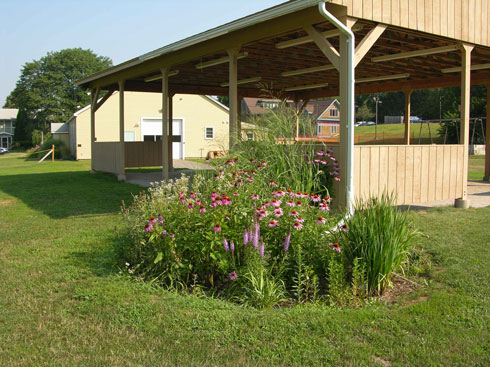
Photo courtesy of Vivan Felten, NRCS
Rain gardens are extremely beneficial. They help reduce the amount of pollutants that wash into our waterways and protect from flooding and drainage problems. So how does one go about building a rain garden?
There are several steps to be taken in designing and installing a rain garden, as outlined in the University of Connecticut’s NEMO (Nonpoint Education for Municipal Officials) program’s rain garden brochure:
- Decide where to place your rain garden. According to UConn NEMO, rain gardens should not be placed closer than 10 feet from the foundation of a house with a basement; over a septic system; or close to a water supply or well. It should be located where it will collect the most amount of runoff possible.
- Determine if your soil is suitable for a rain garden. This is done by performing a percolation test. Dig a hole about six inches deep and fill it with water. If there is still water in it after 24 hours, your soil isn’t suitable for a rain garden. If there isn’t, you are ready to move on to the next step in the process of building your rain garden.
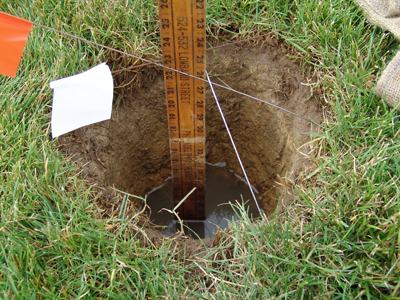
Photo courtesy of C. Robertson
- Size your garden. Next step is to determine how big your garden should be. This is done by measuring the footprint of your house and then estimating how much of the area contributes to the gutter downspout. Once you have that estimated, divide it by six and this is the area you need for your rain garden.
- Install your garden. Time to start digging! Using a string, lay out the shape to define where you want the garden to be so you know where to dig. Then dig about six inches deep, or a couple of inches deeper if you plan to use mulch. The bottom of the garden should be fairly level and the edges should be sloped, but not too steep. Before you start digging, make sure you call the “Call Before You Dig” hotline to locate any underground utilities (1-800-922-4455).
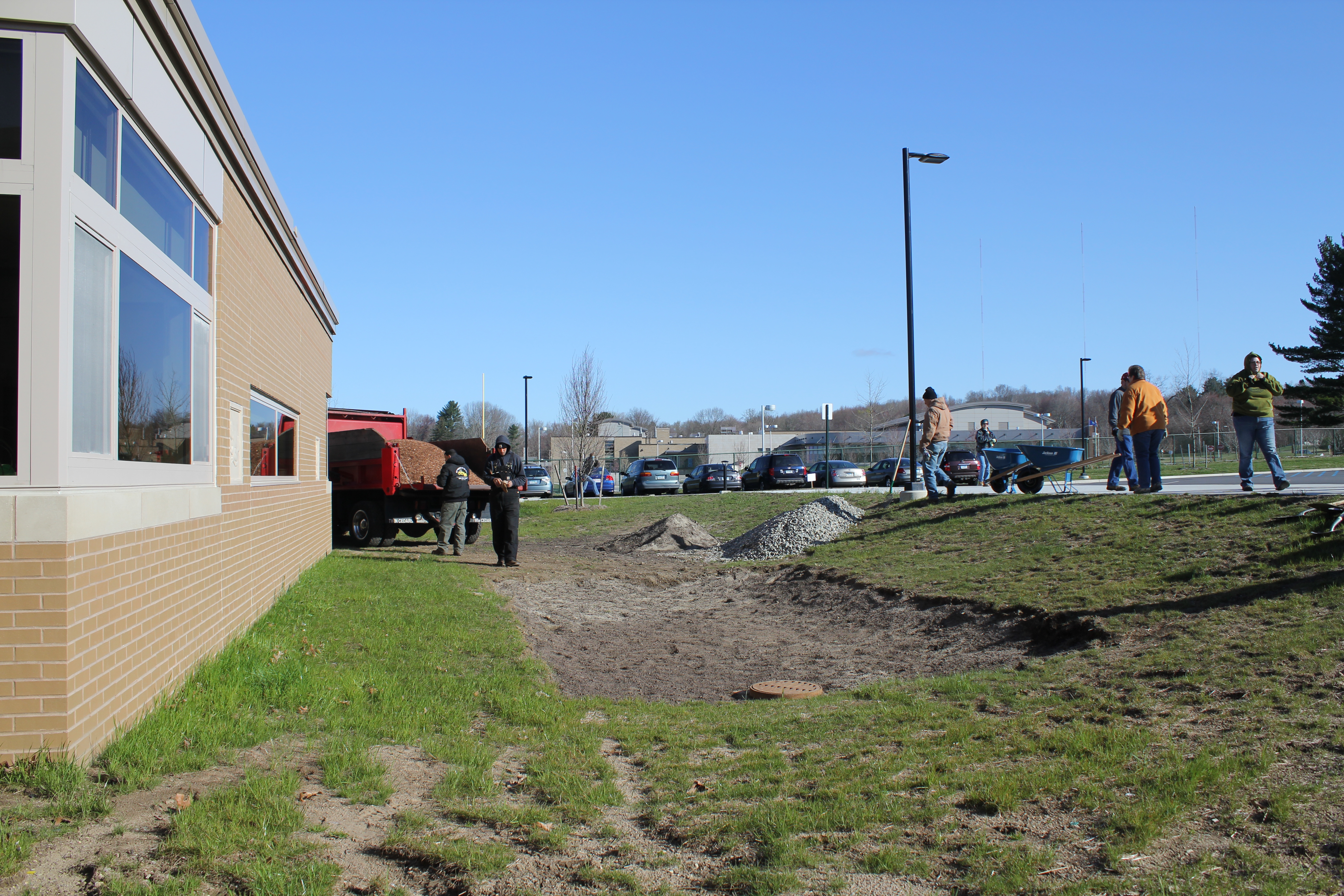
Photo: Kierran Broatch
- Plant your garden. Once you have dug out the area you want to plant the rain garden in, it’s time to put plants in the ground. Plants that tend to do well in rain gardens are ones that tolerate both wet and dry conditions well. There are a variety of plants that can be used (full list in UConn NEMO’s rain garden brochure) such as Swamp Azalea, Cardinal Flower, Iris, Black-Eyed Susan, and New York Aster. After planting, you can apply a vegetative ground cover or hardwood mulch (not pine bark) to reduce weeds and conserve moisture.
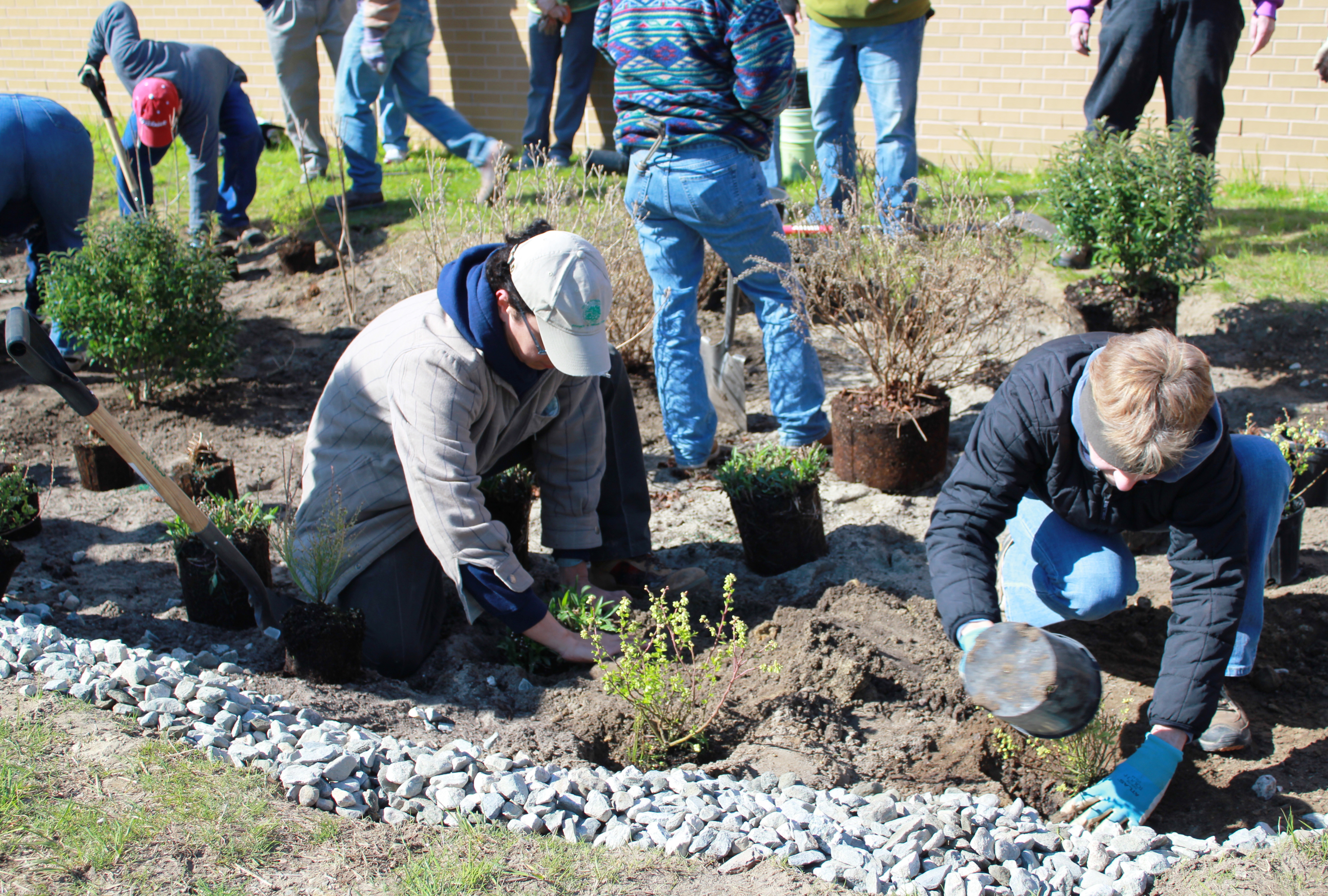
Photo: Kierran Broatch
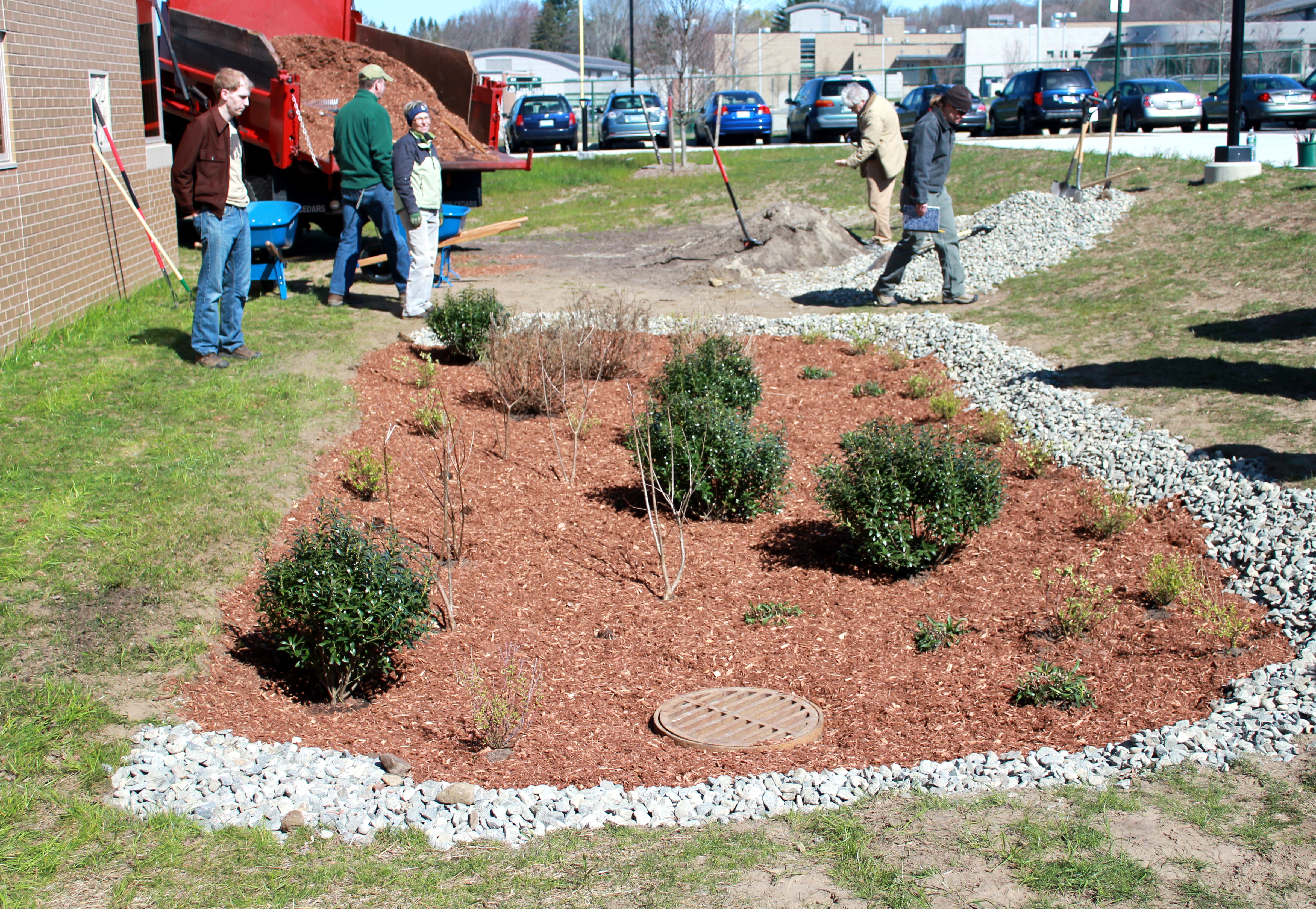
Photo: Kierran Broatch
After your rain garden has been planted, all that’s left is maintaining it like you would any other garden- by watering the plants until they are established and weeding the area as necessary.
The information in this post was adapted from UConn NEMO’s rain garden brochure. Read the brochure for more detailed instructions and other information about building your own residential or commercial rain garden.
Posted by Rebecca Kaplan, director of communications for CFE/Save the Sound

These rain gardens are a very good and beneficial idea. An extremely good point is made here about calling 811 before you dig. It can save you a lot of time and hassle, as well as help to prevent an accident from happening.